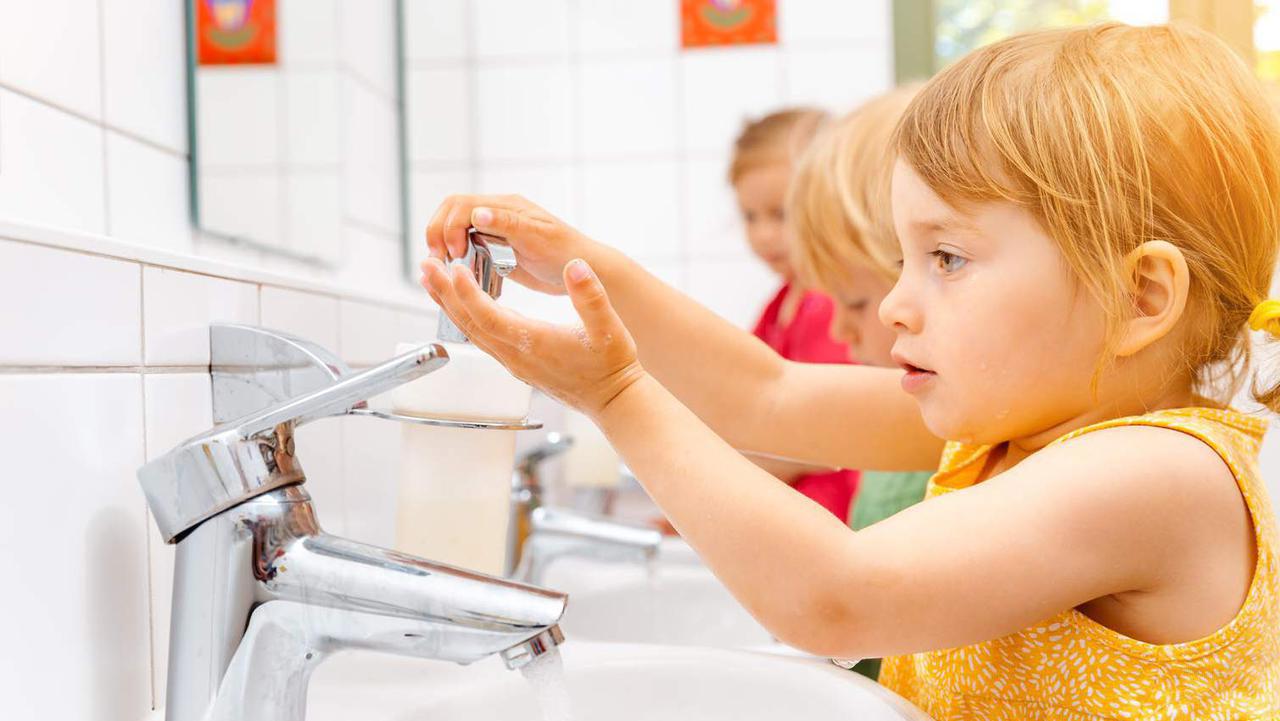
Hygiene practice is an essential area of childcare education, not only for health and safety considerations but because the hygiene skills learnt in the formative years lays the foundation for a future positive relationship to hygiene practices. This impacts many facets of life such as personal grooming and cleanliness, dental and oral health, illness and disease prevention, socialising and interpersonal relationship building.
Placing large groups of babies, toddlers, and young children together in the same place inevitably leads to close contact between children - and sharing of germs! This is unavoidable and in fact healthy at normal levels, as it helps to develop children’s immune systems, and builds their resistance and resilience for future illnesses, and is one of the reason’s socialising young children is so important.
But it is equally important to maintain good hygiene practices in childcare in order to prevent illness outbreaks, and teach children the importance of personal and collective hygiene. Poor hygiene is linked to spreading infectious sickness and disease, and contracting illness through poor food and toileting hygiene, meaning childcare absences and staff sick leave.
Parents are also becoming increasingly aware of hygiene and health, especially in light of the current pandemic, and having thorough hygiene practices and clear policies and protocols for managing these issues reassures parents and instils trust in your facility.
To make sure your childcare centre and personal hygiene is up-to-date, safe, effective and transparent, check out these important areas of good hygiene practices in childcare.
Personal hygiene
Personal hygiene is incredibly important in the childcare setting- not only for reducing the spread of disease amongst staff and children, but because it role models healthy hygiene practices to children that they will begin to emulate. Make sure yourself and the children are following these basic but essential hygiene procedures:
- Thorough handwashing before and after meals, after touching any bodily waste, and after going to the toilet
- Plenty of accessible handwashing stations with clear, easy-to-follow handwashing diagrams
- Regularly use hand sanitizer, particularly after hands-on interactions
- Covering sneezes and coughs with the crook of your elbow
- Wiping children’s noses with disposable tissues and cleaning up thoroughly following
- Remind children to give each other personal space and discourage unhygienic behaviour
Food preparation and meals
Making food efficiently for hungry children is a must in a childcare setting, but don’t forget that hygiene always comes first! Thoroughly wash hands before preparing meals, and ensure children wash hands before and after eating- this will become routine for the children, and make life for you (and their parents) much easier. Ensure plenty of space for each child at mealtimes to reduce contact, and model and teach eating with cutlery to avoid unnecessary hand-to-mouth exposure. And while we love to see sharing, discourage children from sharing their food, cups, and eating utensils (and explain why!).
At the end of mealtimes, model and teach cleaning the dining area, and dispose of rubbish promptly in a designated area that is inaccessible to children.
Nappy changes and toileting
Toileting is another essential area for teaching hygiene, which starts with providing a separate, clean and accessible facility for nappy changes and toileting, and explaining the necessity of using private spaces for these functions. Encourage autonomy with toileting, and ensure children wash hands thoroughly after using the toilet (or having a nappy change). When assisting with toileting or a nappy change, wear gloves that can be discarded following, and wash and sanitize your hands thoroughly.
Health and hygiene policy
A detailed and clear hygiene and health policy, according to current government recommendations, should be understood and followed by all staff, and readily available to parents. Placing signs and posters as visual reminders of the policy is helpful to staff, and reassures parents that your facility excels in hygiene management. It’s also important that parents are aware that children must not come to childcare when sick, and if they appear unwell the parent may be asked to take their child home at the discretion of the staff. Remember that it’s about keeping everyone safe and healthy, and most parents (and children) are very willing to participate in maintaining this goal!
Cleaning protocol
Sometimes cleaning after small people can feel endless and exhausting, but nevertheless it is vital to hygienic childcare. It helps to have a thorough, systematic approach to cleaning and sanitizing in the childcare facility that all staff are familiar with, including cleaning toys and play areas after use, and sanitizing frequent touch-points like doorknobs, chairs and tables.
While it is also up to parents to teach good hygiene practices, it is important they are modelled within the childcare facility to keep everyone healthy, and promote hygienic behaviours. This approach also means fewer childcare absences, reduced staff sickness and leave, and protects the wider community.
As a childcare worker, your contribution to this important work is invaluable, and although hygiene practices may feel like small everyday tasks, they are life-changing in the impact they have upon children, and the ongoing health and wellbeing of our families.